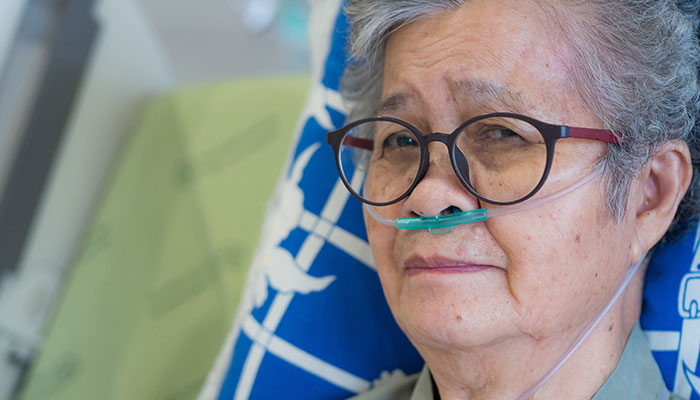Family Caregiver Connection
Helpful tips for family caregivers
May/June 2010
We have answers! This month we feature articles that will help your loved one make travel plans, find caregiving assistance, and ease your worries about an isolated loved one.
Flying with oxygen
 If your relative needs medical oxygen, it’s crucial that you plan ahead for plane travel. From oxygen requirements to battery power, you need to be sure they have enough to cover the whole trip. (You don’t want to run out midair!) You’ll need to cover not only the flight, but layovers and inevitable delays.
If your relative needs medical oxygen, it’s crucial that you plan ahead for plane travel. From oxygen requirements to battery power, you need to be sure they have enough to cover the whole trip. (You don’t want to run out midair!) You’ll need to cover not only the flight, but layovers and inevitable delays.
First, work with your loved one’s health care provider to get medical clearance to travel. The natural oxygen available in an airplane is equivalent to that at 8,000 feet above sea level. Can your relative tolerate this “high altitude” environment? Is it safe? What do they need to do differently to compensate?
Once you receive the medical go ahead:
- Determine how much battery power will be needed. Most airlines require that you have enough battery power for 150 percent of the anticipated length of the flight. The length of the trip and the flow of the oxygen affect how long the batteries will last. For added measure, also find out if your loved one can safely unhook from the oxygen to go through security.
- Make reservations carefully. Contact the airline directly to discuss arrangements for oxygen. Only portable oxygen concentrators (POCs) are allowed. But which ones varies by the company. Consult the airline’s website to determine if the manufacturer’s brand and model are accepted. Confirm when you speak in person. If there is no match for your relative’s equipment, ask what the airline offers in terms of an oxygen service and what it costs. Also, if it is not a nonstop flight, consider longer layovers. This way the batteries can be charged at the airport.
- Special requests. Strive for a window seat so the tubing does not pose a danger for others in your row or people walking in the aisle. Bring the doctor’s order for the oxygen. (Ask if the airline has a special form to be filled out by the doctor. Many of them do.) Consider reserving wheelchair assistance. It makes the TSA process much easier.
- Gather oxygen and battery packs days ahead. You want to be sure you have everything on hand well before departure day. The airline may not let your relative on board if they don’t have all the supplies that are needed. Also pack a three-prong adapter and a spare power cord, just in case.
At the airport
- Get there early as the entire process will be more complicated with the oxygen.
- Check in at the counter. Bring the doctor’s prescription, the oxygen, all necessary battery power, and any signed form the airline requires from the doctor.
- Get wheelchair assistance to go through security and to take your loved one to the gate.
- If your relative can walk through the detector at security without oxygen, consider unhooking and sending the oxygen container separately through the x-ray on its own. Otherwise, a more thorough inspection will be required.
- Use every opportunity to charge up the batteries whenever you are in the airport. Although the plane theoretically has plugs on board, they don’t always work.
- Board when the crew calls for those who need extra time getting settled. This early boarding is designed exactly for your relative’s situation.
Review of the CareFinder Assessment Tool
Finding the right care for your loved one typically involves interviewing a number of care providers. Certainly the “feel” of a person or place is important. But an accurate description of the services needed is key to a good match.
The CareFinder Assessment creates a personalized interview guide based on your answers and comments.It’s a sort of checklist for determining a care provider’s ability to meet your family member’s unique needs. Because it was created by the Alzheimer’s Association, special attention is given to any memory-related problems you identify. But the tool is useful whether there is memory loss or not.
This online tool produces a framework that helps you assess a care agency or facility. It takes only minutes to complete.
The CareFinder gathers information about an individual’s needs.
- Personal care. Does your family member need help getting out of a chair? Can she or he bathe or dress alone?
- Daily tasks. Is assistance needed for cooking? Housekeeping? With shopping? Can your loved one manage his or her medications?
- Memory loss/dementia. Is your loved one easily confused? Are there any behavioral symptoms? For example, a frequent need for reassurance? Or a refusal to bathe?
The interactive tool provides predefined levels of assistance and stages of dementia. You choose those that best reflect your family member. You are also prompted to add comments. This allows you to add details about your loved one’s needs and preferences.
The CareFinder questionnaire also comes in PDF format. Print it out to get input from others.
For more information about interactive tools that support family caregivers, see our page of Links for Families. Return to topWhen is your loved one too isolated?
 When caregiving draws us closer to a family member’s routines, we’re sometimes surprised by what we find. Perhaps you’ve noticed that Dad only leaves the house once or twice a week.
When caregiving draws us closer to a family member’s routines, we’re sometimes surprised by what we find. Perhaps you’ve noticed that Dad only leaves the house once or twice a week.
Social isolation has been shown to be a risk factor for many conditions. Depression. Heart disease. Obesity. Dementia.
Should you be concerned? Not necessarily.
Although 28% of older adults live alone, not all of them feel lonely. Similarly, a person may be surrounded by others but still feel isolated. Before becoming alarmed, consider if your loved one is an extrovert or an introvert.
Extroverts
- like to be out and about in the world
- get energized by doing things with others and often initiate activities
- like to “think out loud” about decisions and want others’ feedback
- find routine, such as solitary housework, unappealing
Introverts
- are naturally quieter and keep thoughts to themselves
- enjoy an active inner world
- get energized by contemplating ideas and memories
- like people but typically have a few close friends rather than a big social circle
Mom may have always been an introvert and happily so. A solitary lifestyle is only a problem if your loved one wishes things were different. Is your loved one’s pattern in later life different from their earlier pattern? Common causes of isolation include death of a partner, friends getting sick or moving, loss of a driver’s license, or increased difficulty getting around.
More important than having become isolated is whether your relative seems distressed by the change. He or she may or may not talk openly about feeling lonely. But depression from loneliness may show itself in other ways. Confused thinking. Irritability. Loss of appetite. Or difficulty sleeping.
If loneliness is a concern, consider making social activity a higher priority. And ask the doctor to do a depression screening. The hazards of stressful isolation are too risky to ignore.
Return to top
